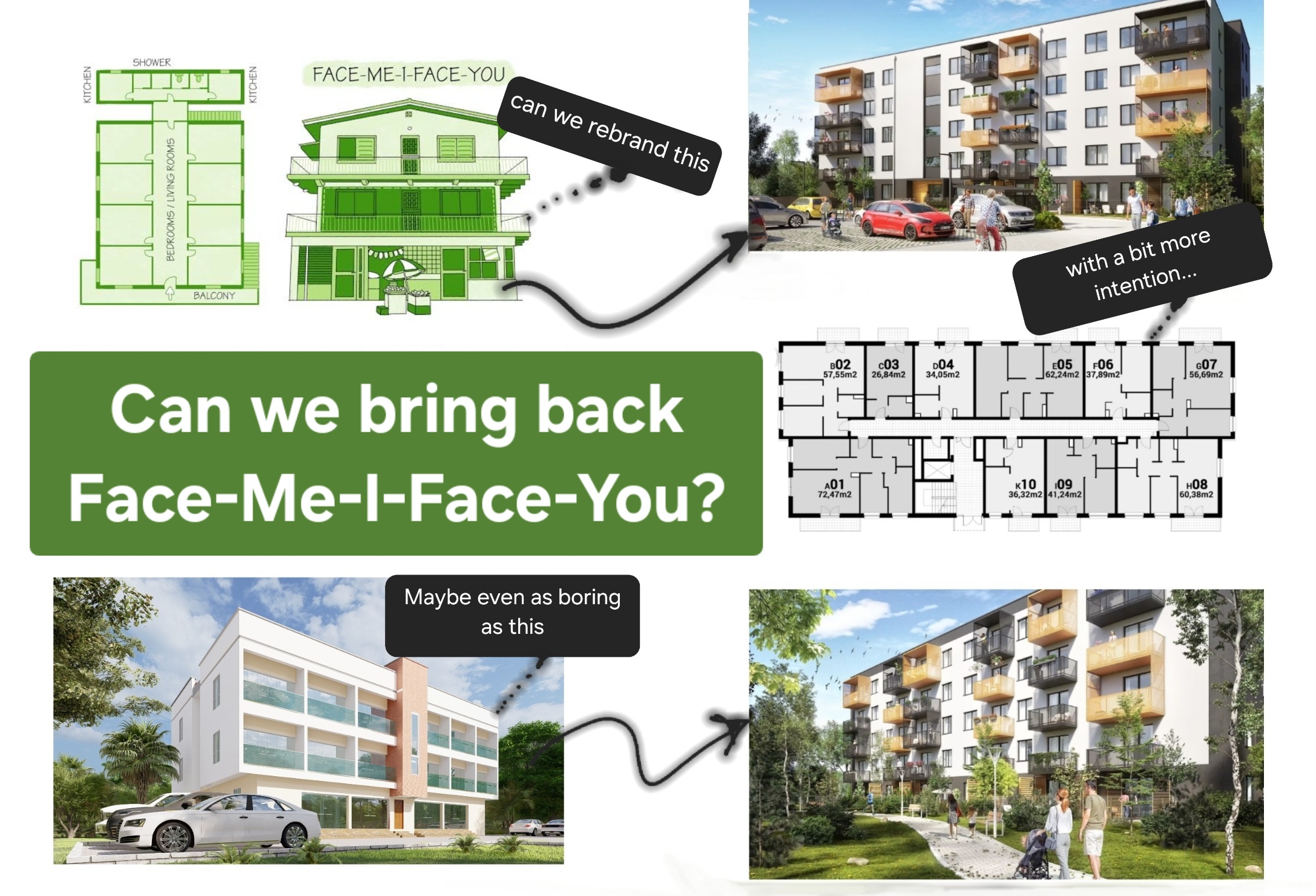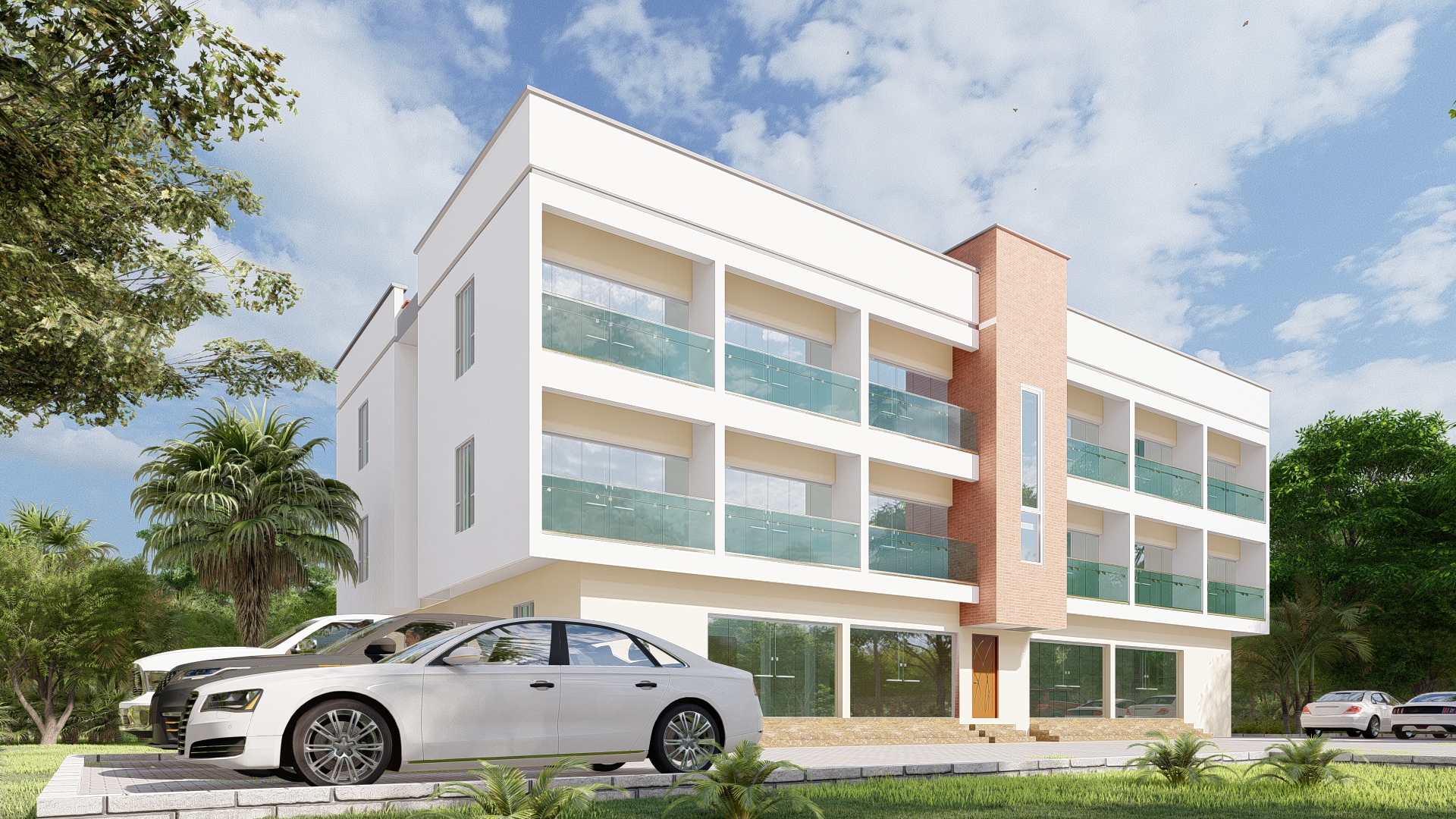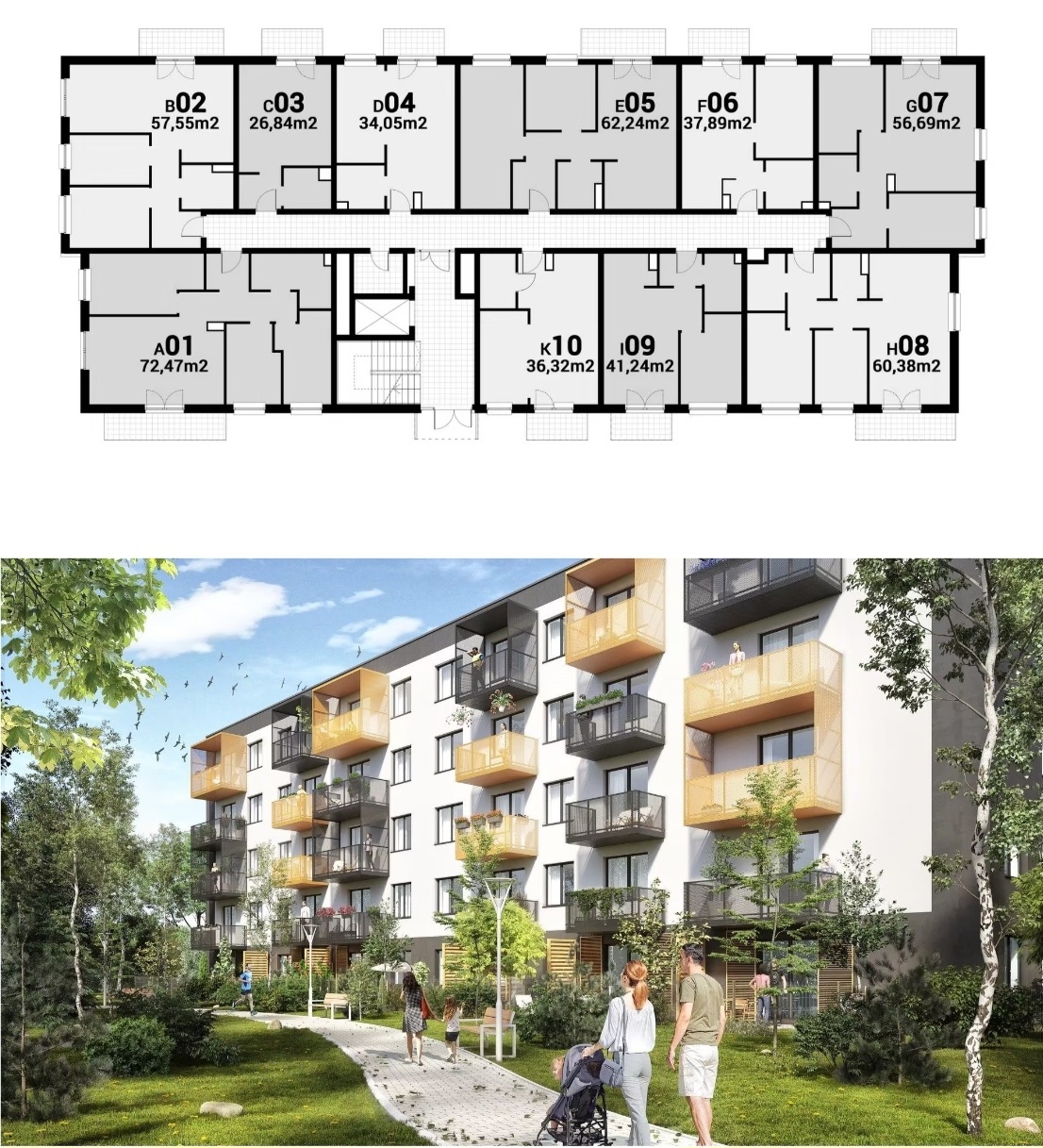
CONTACT US
Affordable Homeownership

SNEAK PEEK
When the name Face-Me-I-Face-You comes up, many roll their eyes. Often dismissed as old, cramped, or outdated, this architectural typology, with rows of rooms facing each other across a communal walkway, has lost favor in modern urban design.
We disagree.
Has it ever occurred to you, that, Face-Me-I-Face-You is really an apartment building, but with poor PR & bad marketing.
You may have even found yourself recently wondering how you haven't seen one in a while. Yes, they're around, but… we're tearing them down and replacing them with options that render more people homeless. (Or poorly housed)
This isn't really about housing, but about how the housing crisis is more of a design/planning problem before a capital (funding) problem.I have a strange opinion that:
Face-Me-I-Face-You isn’t the problem, the branding/PR is. This building type is literally the “vernacular” Nigerian housing type that has quietly served generations of urban Nigerians.
It ticks all the right boxes:
✅ Fit for high-density.
✅ Extremely modular (due to its layout that optimizes flexibility and scalability)
✅ Efficient land use.
✅ Affordable for low-to-middle income families.
Because far from being a relic of the past, Face-Me-I-Face-You is nothing short of architectural gold for solving densification, affordability, and community in Nigerian housing.
Here’s why, and how we can reimagine it for today’s challenges.
But first...
Why did we paree it out? and... Why are we demolishing an easy-to-afford houses and replacing them with houses that people can no longer afford?
Back to the features and characteristics that makes the Face-Me-I-Face-You house perfect for a re-imaginatina and re-invention for modern living and affordable housing.
Face-Me-I-Face-You was born out of necessity: to house many within limited plots.
It offers a template for modular living (rooms that align across a shared space, repeating horizontally or vertically with ease.)
Imagine reinterpreting this today:
- Units you can stack or expand incrementally.
- Flexible room configurations that adapt to changing family needs.
- Dense yet human-scaled living that doesn't compromise dignity.
This is density, reimagined as function, not a sacrifice on quality of life.
These homes were built on budget, but they delivered something rare: shelter that was dignified, secure, and fundamentally human.
At its core, Face-Me-I-Face-You taught affordability through simplicity, not poverty.
Here are lessons that can be applied to modern design:
- Structural systems where individual units are cheaper to replicate.
- Shared infrastructure that lowers cost per household.
- Economies of scale that don't feel impersonal.
Affordable housing doesn't need to feel “low-end.” It can be dignified, smart, and scale to meet real needs.

Forget the idea that these homes were socially backward. They were social by design and:
When thoughtfully applied, this model isn't about crowding but about integrated community.
Here’s how we translate this vernacular into a 21st-century urban home:
Feature How it used to be Modern Re-Imagination
Circulation & Access Shared walkways Green courtyards or shaded corridors
Living Unit Compact rooms Flexible modular units
Layout (per floor) Single-story rows Multi-level, expandable blocks
Privacy Poor, Dense adjacency Privacy, insulation, and adaptable space
Facilities Management Informal management Digitally-enabled communal management (smart security, maintenance)
Below is an image representation of how this can be achieved.

Lagos is bursting at its seams. As density climbs and opportunity spreads, volume often comes at the expense of visibility, space, and affordability.
Face-Me-I-Face-You’s power lies in delivering:

This model may be old, but it’s not obsolete. It’s still fundamental. And it could be the key to designing inclusive neighborhoods that are compact without compromising our humanity.
If we are truly serious about unlocking affordable homeownership at scale in Nigeria, we cannot afford to ignore the lessons of Face-Me-I-Face-You. Its genius was never in its aesthetics but in its efficiency; of shared infrastructure, incremental growth, and community woven into daily life.
But the key to this is "making a total PR upgrade," not just with shiny paint, but with reimagined planning and dignified design that reflects the lifestyle goals of the people who live in them.
Let us:
🔁 Keep the modular layout (it works!)
🔁 Retain the affordability (non-negotiable)
➕ Add planned diversity of units
➕ Add modern shared amenities
➕ Rethink access, lighting, privacy
➕ Rebuild with empathy & intentionality
It’s possible to keep accessibility and affordability, while improving dignity and livability. By reimagining it with today’s design tools, sustainable materials, and digital management systems, we can deliver homes that are affordable to build, easy to scale, and dignified to live in.
Face-Me-I-Face-You should not become a relic of the past as it could be the missing blueprint for Nigeria’s housing future.
01.

02.
Category
Discover insights into creating affordable homeownership with PetitHaus.
